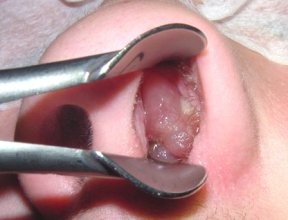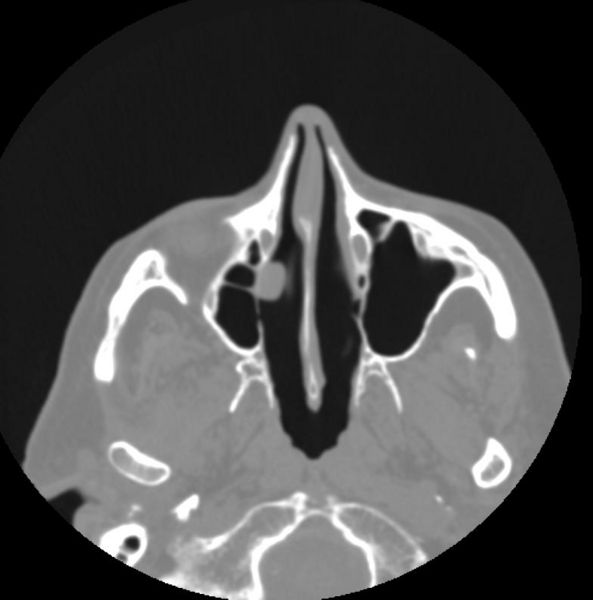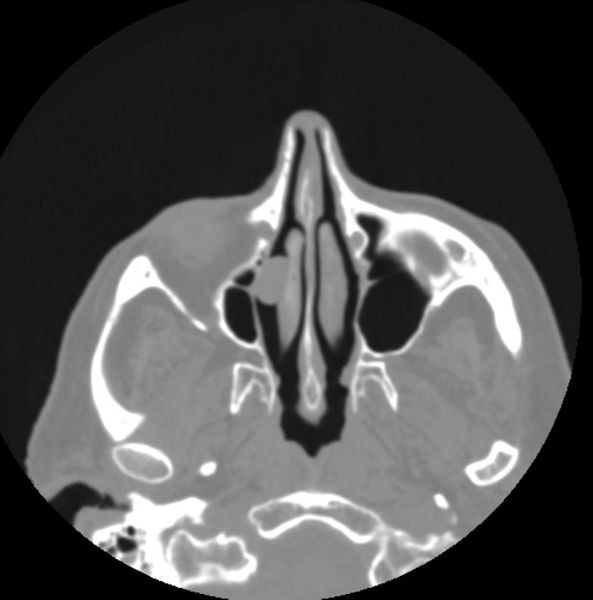Nasal polyp
| https://https://www.youtube.com/watch?v=9rnxdFYmqUo%7C350}} |
| Nasal polyps | ||
| ICD-10 | J33 | |
|---|---|---|
| ICD-9 | 471 | |
| MedlinePlus | 001641 | |
| eMedicine | ent/334 ent/335 | |
| MeSH | C09.603.557 | |
|
WikiDoc Resources for Nasal polyp |
|
Articles |
|---|
|
Most recent articles on Nasal polyp Most cited articles on Nasal polyp |
|
Media |
|
Powerpoint slides on Nasal polyp |
|
Evidence Based Medicine |
|
Clinical Trials |
|
Ongoing Trials on Nasal polyp at Clinical Trials.gov Clinical Trials on Nasal polyp at Google
|
|
Guidelines / Policies / Govt |
|
US National Guidelines Clearinghouse on Nasal polyp
|
|
Books |
|
News |
|
Commentary |
|
Definitions |
|
Patient Resources / Community |
|
Patient resources on Nasal polyp Discussion groups on Nasal polyp Patient Handouts on Nasal polyp Directions to Hospitals Treating Nasal polyp Risk calculators and risk factors for Nasal polyp
|
|
Healthcare Provider Resources |
|
Causes & Risk Factors for Nasal polyp |
|
Continuing Medical Education (CME) |
|
International |
|
|
|
Business |
|
Experimental / Informatics |
Overview
Nasal polyps are polypoidal masses arising mainly from the mucous membranes of the nose and paranasal sinuses.
Diagnosis
They are overgrowths of the mucosa that frequently accompany allergic rhinitis. They are freely moveable and non-tender. Nasal polyps are usually classified into antrochoanal polyps and ethmoidal polyps. Antrochoanal polyps arise from the maxillary sinuses and are much less common, ethmoidal polyps arise from the ethmoidal sinuses. Antrochoanal polyps are usually single and unilateral whereas ethmoidal polyps are multiple and bilateral.
History and Symptoms
Symptoms of polyps include nasal block, sinusitis, anosmia or loss of smell, and secondary infection leading to headache. [1]
Physical Examination
Ear Nose and Throat

The pathogenesis of nasal polyps is unknown. Nasal polyps are most commonly thought to be caused by allergy and rarely by cystic fibrosis although a significant number are associated with non-allergic adult asthma or no respiratory or allergic trigger that can be demonstrated.
These polyps have no relationship with colonic or uterine polyps. Irregular unilateral polyps particularly associated with pain or bleeding will require urgent investigation as they may represent an intranasal tumour.
CT
CT images demonstrate a right nasal polyp
Treatment
Nasal polyps are most often treated with steroids, topical or oral, but can also be treated with surgical methods.
Pre-post surgery, sinus rinses with a warm water (240ml / 8oz) mixed with a small amount (teaspoon) of salts (sodium chloride & sodium bicarbonate) can be very helpful to clear the sinuses. This method can be also used as a preventative measure to discourage the polyps from growing back and should be used in combination with a nasal steroid.
Mometasone furoate, commonly available as a nasal spray for treating common allergy symptoms, has been indicated in the United States by the FDA for the treatment of nasal polyps since December 2004.
External links
- Nasal Polyps emedicine.com
- Nasal polyps: Signs and symptoms mayoclinic.com

